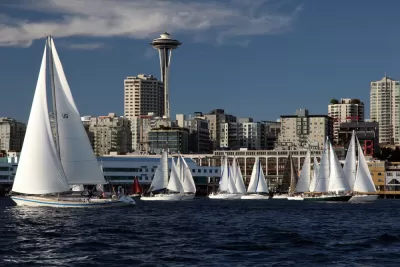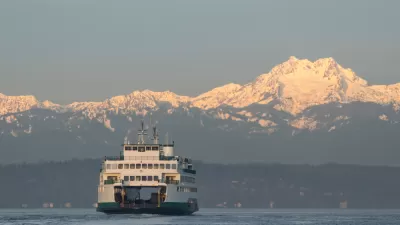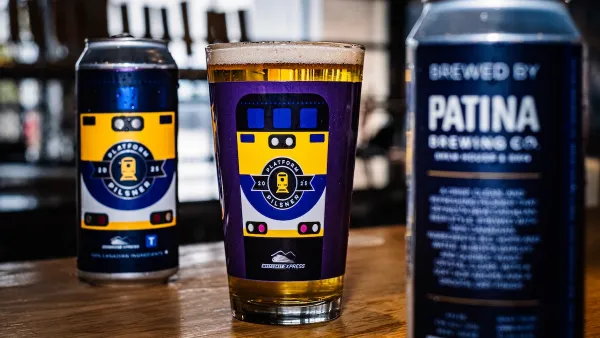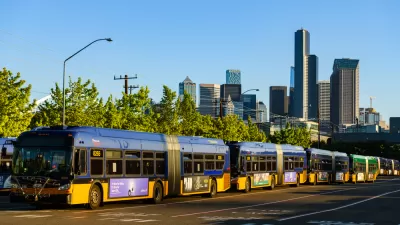Seattle appears to be following the Vancouver, B.C. model by increasing population and residential density while investing in transit. If it works, traffic congestion will not deteriorate, and vehicle trips should drop.

America's growing cities face an immense challenge: can they add population without greatly exacerbating traffic congestion? By one measure, Vancouver, British Columbia set the standard by "reduc(ing) traffic by 20 to 30 percent since 2006 while growing its population by 4.5 percent," according to this August 2013 post.
Outside of the six transit legacy cities in the U.S: "Boston, Chicago, New York, Philadelphia, San Francisco and Washington, D.C. -- that developed dense downtowns long before the automobile and have always maintained significant transit ridership," it is difficult to increase transit share as newer cities were largely designed around the automobile, observes Scott Beyer in Governing.
Seattle may come closest to emulating Vancouver model by "relaxing zoning laws to allow for denser development" and improving transit.
As America’s fastest-growing big city -- it added 21,000 people in 2015 -- it’s growing denser and more congested --[but] countywide bus ridership since 2002 has grown at a faster rate, more than double, compared to the population.
Residents invest in transit
Last November, the Puget Sound region passed a measure that will fund the the $53.8 billion Sound Transit 3 plan. More telling of the pro-urban outlook of city residents, though, was the passage of a transportation measure in 2015. "(T)he biggest winners appear to be Seattle’s urbanists — its advocates for more bicycling, transit and density," reported The Seattle Times.
And a year earlier, Seattle residents stepped up to fund buses after King County voters, the majority of which live outside Seattle, rejected increasing a car tab and a 0.1 percent sales tax.
"Time will tell whether these measures help Seattle maintain, or even improve, its mobility," concludes Beyer.
Already, average congestion and commute times there remain below that of legacy cities. The real test will be keeping it that way even as it continues to get denser and bigger.
FULL STORY: The Right Kind of Transit for 'In-Between' Cities

Planetizen Federal Action Tracker
A weekly monitor of how Trump’s orders and actions are impacting planners and planning in America.

Restaurant Patios Were a Pandemic Win — Why Were They so Hard to Keep?
Social distancing requirements and changes in travel patterns prompted cities to pilot new uses for street and sidewalk space. Then it got complicated.

Map: Where Senate Republicans Want to Sell Your Public Lands
For public land advocates, the Senate Republicans’ proposal to sell millions of acres of public land in the West is “the biggest fight of their careers.”

Maui's Vacation Rental Debate Turns Ugly
Verbal attacks, misinformation campaigns and fistfights plague a high-stakes debate to convert thousands of vacation rentals into long-term housing.

San Francisco Suspends Traffic Calming Amidst Record Deaths
Citing “a challenging fiscal landscape,” the city will cease the program on the heels of 42 traffic deaths, including 24 pedestrians.

California Homeless Arrests, Citations Spike After Ruling
An investigation reveals that anti-homeless actions increased up to 500% after Grants Pass v. Johnson — even in cities claiming no policy change.
Urban Design for Planners 1: Software Tools
This six-course series explores essential urban design concepts using open source software and equips planners with the tools they need to participate fully in the urban design process.
Planning for Universal Design
Learn the tools for implementing Universal Design in planning regulations.
Heyer Gruel & Associates PA
JM Goldson LLC
Custer County Colorado
City of Camden Redevelopment Agency
City of Astoria
Transportation Research & Education Center (TREC) at Portland State University
Camden Redevelopment Agency
City of Claremont
Municipality of Princeton (NJ)





























